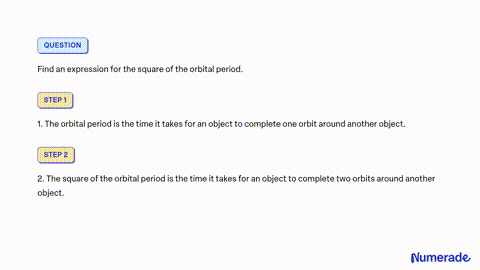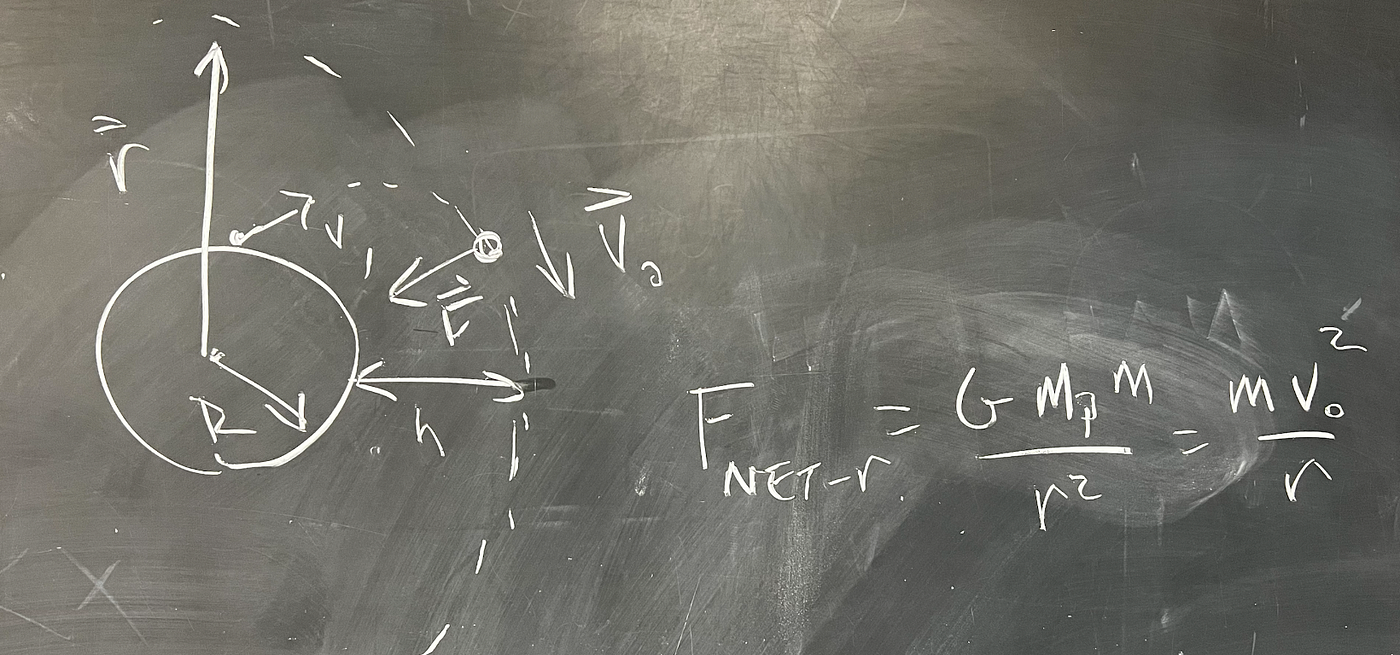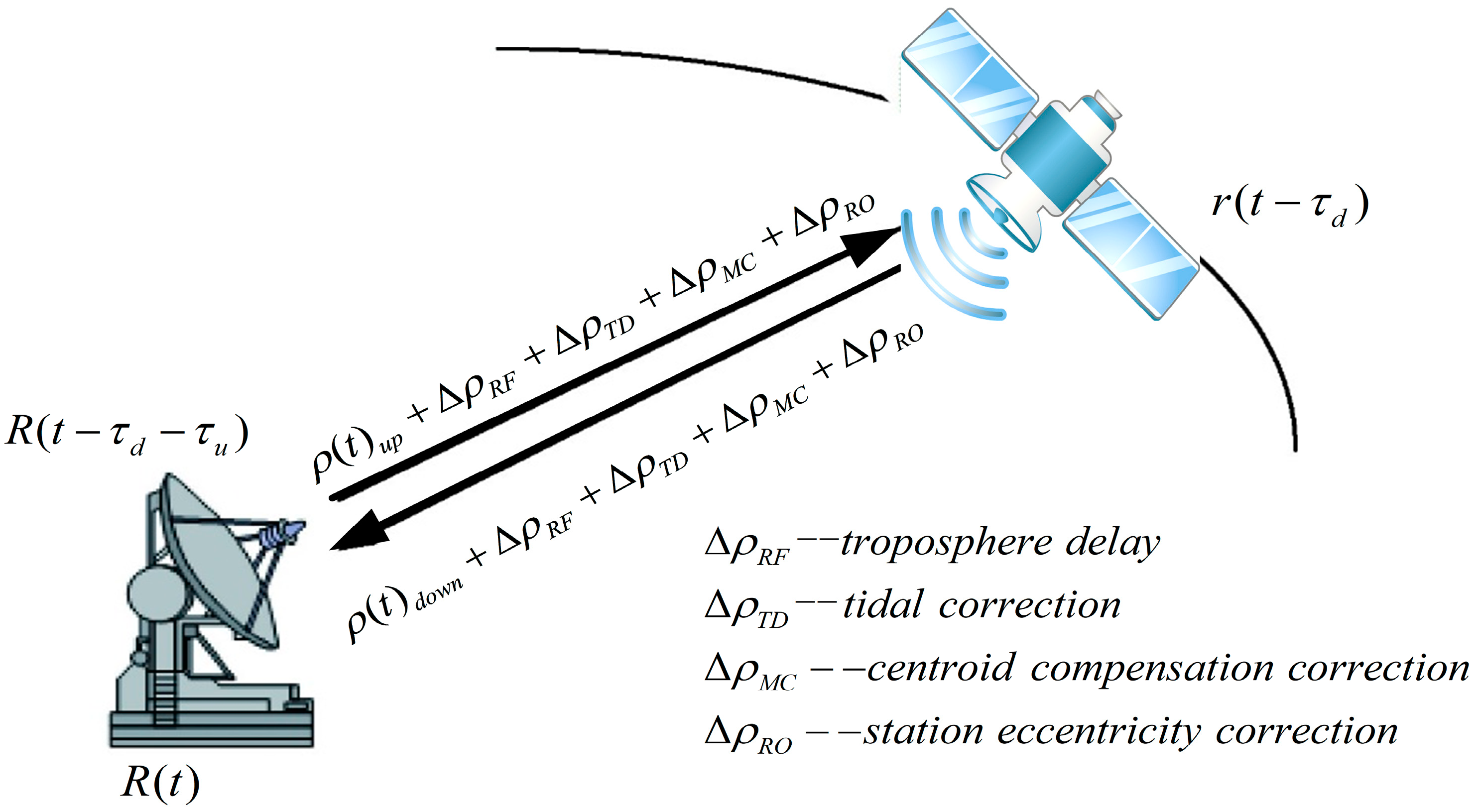Square both sides: T2 × GM r = (2πr)2 T 2 × G M r = ( 2 π r) 2 Divide both sides by GM r G M r: T2 = (2πr)2 GM r T 2 = ( 2 π r) 2 G M r Clean it up: T2 = (2πr)2×r GM T 2 = ( 2 π r) 2 × r G M Take out r r to get the final answer: T2 = (2π)2 3 2 ( 2 π) 2 G M r 3 If you take out the constant you get Kepler’s law (as Ross Millikan said):
Tuning Cell-Free Composition Controls the Time Delay, Dynamics, and Productivity of TX-TL Expression | ACS Synthetic Biology
Find an expression for the square of the orbital period. Express your answer in terms of G, M, R, and π. The potential energy U of an object of mass m that is separated by a distance R from an object of mass M is given by U=−G*Mm/R. What is the kinetic energy K of the satellite? Express your answer in terms of the potential energy U.

Source Image: pubs.acs.org
Download Image
Definition. The square of the orbital period of a planet is directly proportional to the cube of the semi-major axis of its orbit. The third law, published by Kepler in 1619, captures the relationship between the distance of planets from the Sun, and their orbital periods. Symbolically, the law can be expressed as.

Source Image: toppr.com
Download Image
Solved The square of the orbital period of a planet is | Chegg.com
The Law states that the square of the period is equal to the cube of the semi-major axis P^2=a^3 P 2 = a3 In order for the units to be correct, the semi-major axis should be in astronomical units, and the period should be in years. Convert the period into the most appropriate units.

Source Image: mdpi.com
Download Image
Find An Expression For The Square Of The Orbital Period
The Law states that the square of the period is equal to the cube of the semi-major axis P^2=a^3 P 2 = a3 In order for the units to be correct, the semi-major axis should be in astronomical units, and the period should be in years. Convert the period into the most appropriate units.
Now that we have the equation in hand, let’s try to interpret it. An immediate and very interesting observation we can make from the equation of orbit is that r (\phi) r(ϕ) is periodic as \phi \rightarrow \phi + 2\pi ϕ → ϕ+2π. Obviously the simplest orbit occurs for \epsilon = 0 ϵ = 0, in which case we simply have.
Remote Sensing | Free Full-Text | Improved Initial Orbit Determination Based on the Gooding Method of Low Earth Orbit Space Debris Using Space-Based Observations
What is the square of an orbital period? The square of an orbital period is a mathematical calculation that involves multiplying the orbital period (the time it takes for an object to complete one orbit) by itself. It is represented by the formula T 2, where T is the orbital period in seconds.
Orbital & Circular Velocity | Definition & Formula – Video & Lesson Transcript | Study.com

Source Image: study.com
Download Image
SOLVED: Find an expression for the square of the orbital period. Express your answer in terms of G, M, R, and A. T^2 Submit Request Answer
What is the square of an orbital period? The square of an orbital period is a mathematical calculation that involves multiplying the orbital period (the time it takes for an object to complete one orbit) by itself. It is represented by the formula T 2, where T is the orbital period in seconds.

Source Image: numerade.com
Download Image
Tuning Cell-Free Composition Controls the Time Delay, Dynamics, and Productivity of TX-TL Expression | ACS Synthetic Biology
Square both sides: T2 × GM r = (2πr)2 T 2 × G M r = ( 2 π r) 2 Divide both sides by GM r G M r: T2 = (2πr)2 GM r T 2 = ( 2 π r) 2 G M r Clean it up: T2 = (2πr)2×r GM T 2 = ( 2 π r) 2 × r G M Take out r r to get the final answer: T2 = (2π)2 3 2 ( 2 π) 2 G M r 3 If you take out the constant you get Kepler’s law (as Ross Millikan said):

Source Image: pubs.acs.org
Download Image
Solved The square of the orbital period of a planet is | Chegg.com
Definition. The square of the orbital period of a planet is directly proportional to the cube of the semi-major axis of its orbit. The third law, published by Kepler in 1619, captures the relationship between the distance of planets from the Sun, and their orbital periods. Symbolically, the law can be expressed as.

Source Image: chegg.com
Download Image
Orbital Period – KSP Let’s Do The Math #9 – YouTube
The angle between the radial direction and v v → is θ θ. The areal velocity is simply the rate of change of area with time, so we have. areal velocity = ΔA Δt = L 2m. areal velocity = Δ A Δ t = L 2 m. Since the angular momentum is constant, the areal velocity must also be constant. This is exactly Kepler’s second law.

Source Image: youtube.com
Download Image
Calculating the Speed to Get to Low Earth Orbit (and Other Calculations) | by Rhett Allain | Medium
The Law states that the square of the period is equal to the cube of the semi-major axis P^2=a^3 P 2 = a3 In order for the units to be correct, the semi-major axis should be in astronomical units, and the period should be in years. Convert the period into the most appropriate units.

Source Image: rjallain.medium.com
Download Image
Remote Sensing | Free Full-Text | Precise Orbit Determination and Accuracy Analysis for BDS-3 Satellites Using SLR Observations
Now that we have the equation in hand, let’s try to interpret it. An immediate and very interesting observation we can make from the equation of orbit is that r (\phi) r(ϕ) is periodic as \phi \rightarrow \phi + 2\pi ϕ → ϕ+2π. Obviously the simplest orbit occurs for \epsilon = 0 ϵ = 0, in which case we simply have.

Source Image: mdpi.com
Download Image
SOLVED: Find an expression for the square of the orbital period. Express your answer in terms of G, M, R, and A. T^2 Submit Request Answer
Remote Sensing | Free Full-Text | Precise Orbit Determination and Accuracy Analysis for BDS-3 Satellites Using SLR Observations
Find an expression for the square of the orbital period. Express your answer in terms of G, M, R, and π. The potential energy U of an object of mass m that is separated by a distance R from an object of mass M is given by U=−G*Mm/R. What is the kinetic energy K of the satellite? Express your answer in terms of the potential energy U.
Solved The square of the orbital period of a planet is | Chegg.com Calculating the Speed to Get to Low Earth Orbit (and Other Calculations) | by Rhett Allain | Medium
The angle between the radial direction and v v → is θ θ. The areal velocity is simply the rate of change of area with time, so we have. areal velocity = ΔA Δt = L 2m. areal velocity = Δ A Δ t = L 2 m. Since the angular momentum is constant, the areal velocity must also be constant. This is exactly Kepler’s second law.